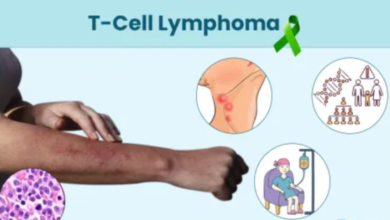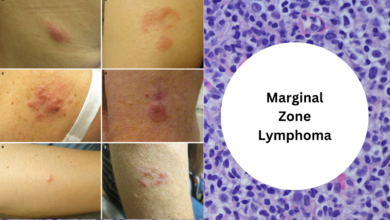
What is Mantle Cell Lymphoma?
Mantle cell lymphoma is a rare type of non-Hodgkin lymphoma, a cancer that originates in the lymphatic system. It’s characterized by the abnormal growth of B cells, a type of white blood cell.
Types of Mantle Cell Lymphoma
While there aren’t distinct subtypes of mantle cell lymphoma, it can be classified based on the specific genetic mutations present in the cancer cells.
Symptoms of Mantle Cell Lymphoma
Symptoms of mantle cell lymphoma can vary, but often include:
• Swollen lymph nodes, especially in the neck, armpits, or groin
• Fatigue
• Night sweats
• Unexplained weight loss
• Abdominal pain or swelling
• Bone pain
Causes of Mantle Cell Lymphoma
The exact cause of mantle cell lymphoma is unknown. However, it’s believed to be associated with specific genetic mutations that affect B cells.
Who Can Suffer from Mantle Cell Lymphoma?
Mantle cell lymphoma primarily affects adults, particularly older adults.
Diagnostic Tests for Mantle Cell Lymphoma
To diagnose mantle cell lymphoma, a doctor may use a combination of tests, including:
• Physical exam: To check for swollen lymph nodes and other abnormalities.
• Blood tests: To check for abnormalities in the blood cells.
• Biopsy: A tissue sample is removed from a swollen lymph node or other affected tissue and examined under a microscope.
• Imaging tests: CT scans, MRIs, and PET scans can help determine the extent of the cancer.
Stages of Mantle Cell Lymphoma
Mantle cell lymphoma is typically staged using the Ann Arbor staging system, which considers the extent of the disease and the involvement of lymph nodes.
Treatment of Mantle Cell Lymphoma
The treatment for mantle cell lymphoma depends on the stage of the disease and the patient’s overall health. Common treatment options include:
• Chemotherapy: To kill cancer cells throughout the body.
• Immunotherapy: To boost the body’s immune system to fight cancer cells.
• Targeted therapy: To target specific molecules involved in cancer cell growth.
• Stem cell transplantation: To replace damaged bone marrow with healthy stem cells.
Diet and Mantle Cell Lymphoma Prevention
While a healthy diet cannot directly prevent mantle cell lymphoma, it can support overall health and strengthen the immune system. Here are some general dietary recommendations:
• A balanced diet: A diet rich in fruits, vegetables, and whole grains can help.
• Limit processed foods and sugary drinks: These can contribute to weight gain and other health problems.
• Maintain a healthy weight: Obesity is linked to an increased risk of certain cancers.
Overall Survival Rate of Mantle Cell Lymphoma
The overall survival rate for mantle cell lymphoma varies depending on the stage of the disease and the patient’s overall health. While advancements in treatment have improved outcomes, it remains a challenging cancer to treat. Early detection and aggressive treatment are crucial for a better prognosis.
Doctor to Consult
A hematologist-oncologist is the best doctor to consult for mantle cell lymphoma.
Diseases Associated with Mantle Cell Lymphoma
While mantle cell lymphoma is not directly associated with other specific cancers, it can be linked to certain genetic mutations and immune system dysfunctions.
How to Prevent Mantle Cell Lymphoma
Unfortunately, there’s no guaranteed way to prevent mantle cell lymphoma as it’s often linked to specific genetic mutations. However, maintaining a healthy lifestyle can help reduce the risk of certain factors that may contribute to the development of cancer:
• Limit exposure to radiation and certain chemicals: Exposure to these substances can increase the risk of certain types of cancer.
• Maintain a healthy weight: Obesity is linked to an increased risk of certain cancers.
• Regular check-ups: Regular check-ups can help detect any abnormalities early on.
• Healthy lifestyle: A healthy lifestyle, including a balanced diet and regular exercise, can help boost the immune system.





